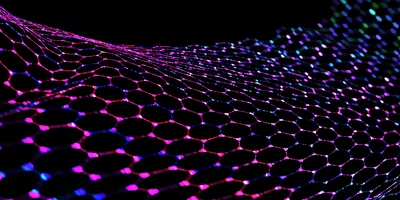Scientists at Daegu Gyeongbuk Institute of Science and Technology (DGIST) in Korea have fabricated a flexible material that lights up brightly when stretched and/or when an electric field is applied. The results were published in the journal Applied Physics Reviews and show promise for the development of bright, sustainable, stretchable devices for use, for example, as interactive skin displays and in soft robotics.
“Our material overcomes challenges in ‘alternating-current-driven electroluminescent’ (ACEL) devices that are currently under development,” explains Soon Moon Jeong of DGIST’s Division of Energy Technology. “Current devices don’t offer as much luminescence as scientists are aiming for due to issues with their design.”
Soft, light-emitting ACEL devices are made by sandwiching a light-emitting compound between two electrode layers. But for the light in the middle to reach the surface and actually be seen, it needs at least one of the electrode layers to be transparent. This, however, leads to several issues depending on the type of material used, such as the electrode being brittle or difficult to fabricate.
Jeong and his colleagues overcame this and other design issues in ACEL devices by inserting stretchable silver nanowire electrodes in-parallel in between two light-emitting layers made of copper-ion-doped zinc sulfide particles embedded in polydimethylsiloxane (ZnS:Cu/PDMS). ZnS:Cu/PDMS has an attractive property: it generates light when it is deformed. This is called mechanoluminescence. By adding the silver nanowire electrodes, the device also becomes electroluminescent. In other words, applying an electric field to it causes the material to shine brightly. “Our device is unique in that it can simultaneously produce mechano- and electroluminescence,” says Jeong.
The design also allows the use of thick light-emitting layers in contrast to previous ACEL devices that can only use layers that are thin enough to apply a strong electric field between the two electrodes. The new design overcomes this issue by inserting the electrodes as ultrathin wires inside of the light-emitting material. The thicker material produces 3.8 times as much electroluminescent brightness as other ACEL devices.
“Our proposed structure could currently be used in large-scale outdoor billboards or light-emitting banners, due to its sturdiness against environmental factors and its simple design,” says Jeong.
The team next wants to improve the device’s electroluminescence in response to a low electric field. To achieve this, they plan to arrange the silver nanowires in diverse directions, instead of in-parallel as with the current device.
- This press release was originally published on the Daegu Gyeongbuk Institute of Science and Technology website











